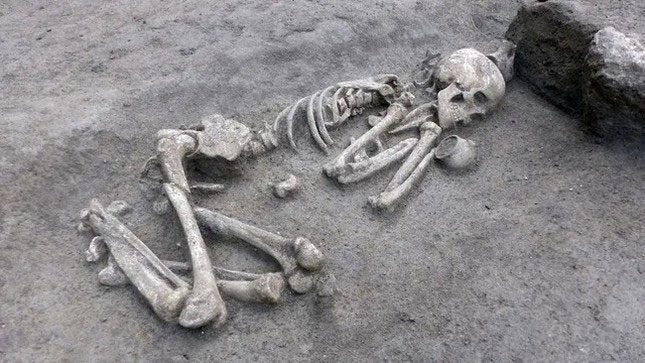Archaeologists in France have excavated a Neolithic site containing 63 graves and hundreds of architectural structures and artifacts belonging to humans over approximately 4,000 years.
The site, located in Clermont-Ferrand, a city in the Auvergne region of central France, was discovered during construction in the 1980s.
However, it wasn’t until the highway expansion project began in 2019 that archaeologists started to excavate there, according to the National Institute for Preventive Archaeological Research (INRAP).

One of many human graves found at the Neolithic site shows the deceased placed in a folded position. (Photo: National Institute for Preventive Archaeological Research (INRAP)).
Radiocarbon dating reveals that humans had arrived in this area before 6000 B.C., during the Neolithic or Middle Stone Age.
However, most of the radiocarbon dating results indicate that this site was used throughout the Neolithic period. During this time, people began to establish settlements and relied on agriculture; some pottery, hearths, and pits at this site date from 4750 to 4500 B.C.
Mass graves and cremation practices
The archaeologists also discovered various graves, primarily simple ones without furnishings. In these pits, the deceased were buried in a “folded position,” lying on their sides with their knees bent.
However, researchers found some graves constructed of dry stone (stones stacked without mortar) that were likely covered by earthen mounds. These graves exhibit complex arrangements, sometimes containing multiple individuals and dating back to the fifth millennium B.C.
The research team also found pits or graves made from long stone slabs. It appears that by this time, people were no longer living at the site but were using it as a burial ground.
By the fourth millennium B.C., cremation practices had been adopted, as evidenced by two separate graves containing cremated remains.


















































